Table of content
What Is Behavioural Assessment: Definition, Benefits & How to Use Them
What is behavioural assessment and why does it matter? Discover how it reveals key traits and helps you hire, train, and grow people effectively.
What is behavioural assessment? Imagine two candidates with equally impressive résumés. On paper, they seem identical - but in practice, one thrives under pressure while the other struggles with change. Behavioural assessment helps reveal these hidden differences, giving employers the insight to choose the right person for the right role.
In this article, you’ll discover what behavioural assessment involves, the key aspects it measures, and how it can transform hiring, employee development, and overall workplace performance.
What Is a Behavioural Assessment?
A behavioural assessment is a structured, evidence-based evaluation that explores an individual’s characteristic patterns, intentions, and reactions in workplace-like scenarios.
The main goal of a behavioural assessment is to reveal how a person tends to behave - not merely what they say or what’s on their résumé. By probing motivations, preferences, and coping styles, this evaluation provides insight into how well someone might thrive or struggle in a role, helping hiring teams make informed decisions
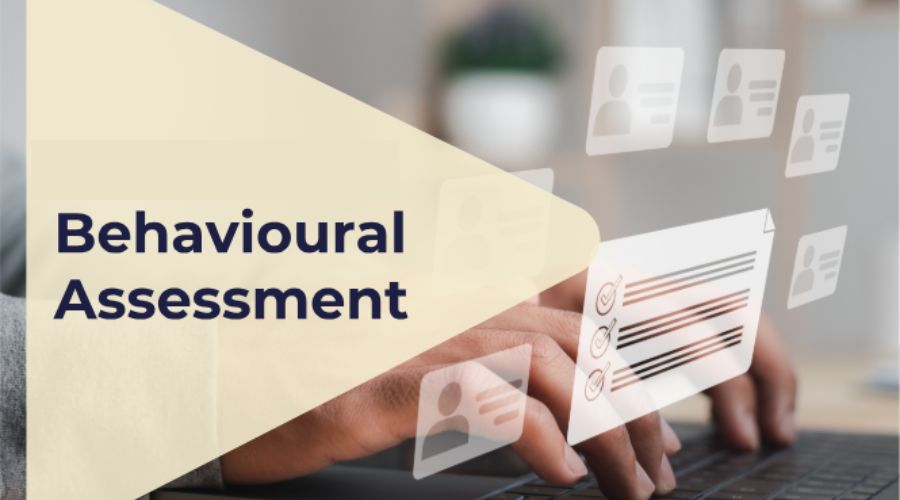
Understanding the behavior assessment definition helps recruiters, HR specialists, and team leads determine how someone is likely to perform when faced with real-life challenges - whether that’s adapting to change, collaborating with peers, or managing stress.
Organizations across various industries, especially those in recruitment and employee development, utilize these tools.
- Employers often deliver digital personality tests, situational judgment exercises, or scenario-based tasks to screen candidates.
- HR teams also use them to coach staff, identify areas for growth, or align individuals with the right career paths.
Typically, this process uses self-report questionnaires (e.g., rating agreement with statements), hypothetical work situations, or digital simulations.
There are no “right” or “wrong” responses - rather, the focus is on revealing consistent responses that reflect traits such as resilience, conscientiousness, or adaptability. Outcomes help match individuals with roles that suit their working style.
Benefits of Behavioural Assessments
Evaluating behavioral competencies helps reveal a candidate’s ability to grow, adapt, and collaborate effectively within a team. Understanding what behavioural assessment is and incorporating behavior-based assessment methods allows employers to identify traits that predict long-term success and strong team performance.
Hiring individuals with strong interpersonal skills (such as emotional intelligence and the ability to work well in teams) often strengthens overall team performance. While specific technical skills can be taught, attitudes and core personality traits are much harder to change.
For example, Solid Solutions Management applies the DISC assessment—a workplace-focused behavioral test—to identify key personality traits and design targeted training to address technical skill gaps. This approach has proven effective, with 95% of candidates evaluated through their talent assessments securing full-time roles.
Similarly, AMC Theatres implemented behavioral hiring assessments to reduce turnover, improve workplace culture, and boost both employee engagement and customer satisfaction.
Here are six key reasons why integrating behavioral tests into your hiring process can make a significant impact:
| Benefit | Description |
| Accurately forecasts job performance | Combining various evaluation methods, including behavioural assessment tools and cognitive tests, delivers a reliable prediction of how a candidate will perform in a role. |
| Reveals likely future actions | Personality insights from a behavioural assessment are often more reliable indicators of future conduct than reviewing past work history, because they evaluate consistent behavioural patterns that tend to remain stable over time, even across different roles or environments. |
| Encourages genuine responses | These assessments present multiple-choice questions with equally valid options, aiming to connect the right behavioural traits with the right job rather than labeling traits as positive or negative. |
| Minimizes bias and improves fairness | Standardized behavioural assessment processes allow employers to evaluate personality traits objectively, without influence from demographic factors such as age, gender, or ethnicity. |
| Enhances cultural fit | A behavioural assessment helps identify candidates who align with a company’s culture and work environment, fostering long-term engagement. |
| Speeds up recruitment | Using behavioural assessments can significantly reduce administrative effort, often shortening the time-to-hire by 50–75%. |
4 Key aspects of behavioral assessment
After understanding what behavioural assessment is, it is important to see how each aspect works together to create a complete picture of an individual’s behaviour. A behavioural assessment gathers structured observations, evaluates them in context, and converts them into meaningful, goal-driven insights.
1. Observation and Description
This stage focuses on systematically observing a person’s actions and documenting them in precise, factual terms. It measures what can be directly seen - such as specific behaviors, their frequency, and the way they are performed - without adding assumptions.
The outcome is a reliable record that accurately reflects how someone behaves in real situations, creating a solid foundation for later analysis. In the context of what behavioural assessment is, this allows decision-makers to detect consistent patterns and pinpoint specific responses to different scenarios.
2. Contextual Analysis
This aspect examines the circumstances surrounding the behavior, including what triggers it and what happens afterward. It measures antecedents and consequences to identify the underlying causes or motivators.
The outcome is a clearer understanding of why certain behaviors occur in particular environments, revealing how external and internal factors influence actions.
About what is behavioural assessment, this step highlights the impact of context on behavioral expression, enabling more targeted strategies for improvement or adjustment.

3. Measurement and Evaluation
Measurement and evaluation take observed behaviours and convert them into clear. It tracks the number of occurrences, duration, and intensity, often using tools such as rating scales, checklists, or timing methods.
This ensures behavioural assessment provides precise, measurable benchmarks that can be compared over time or across individuals. Within what is behavioural assessment, this ensures that evaluations are consistent, objective, and backed by concrete metrics.
4. Goal orientation
Every behavioural assessment is designed with specific objectives in mind, whether it’s selecting the right candidate, improving team performance, or identifying areas for professional development.
By linking behavioural findings directly to these goals, the assessment ensures the insights gained are not just descriptive but can be applied in real-world decisions. This goal-driven approach is what makes what is behavioural assessment a practical and valuable tool in organisational settings.
How Behavioural Assessments Work
Behavioral assessment refers to a structured approach that evaluates how individuals respond in work-related circumstances. Employers use this method to understand patterns in behaviour, uncover decision-making style, emotional responses, and adaptability in real scenarios.
These assessments work by placing candidates in real or hypothetical situations during structured interviews or online tests, allowing employers to observe how they respond, solve problems, and demonstrate key traits in context.
Behavioral Interview
A behavioral interview involves a series of competency-driven questions aimed at understanding how a candidate handled real situations in the past. One of the most common frameworks used is the STAR model, which stands for Situation, Task, Action, and Result.
- Situation – The candidate describes the context or challenge they faced.
- Task – They explain their specific responsibility or objective in that situation.
- Action – They detail the steps they took to address the challenge.
- Result – They share the outcome, ideally supported by measurable impact.
The STAR model is applied in behavioral interviews because it provides a structured way for candidates to present experiences, making it easier for interviewers to assess critical skills such as problem-solving, resilience, teamwork, and conflict resolution.
The interviewer prompts the candidate with questions about situations they’ve encountered, aiming to observe how they respond. This reveals their capacity for teamwork, handling pressure, and solving problems.
By evaluating actual behaviours rather than hypothetical scenarios, employers gain reliable insights into whether the candidate’s working style aligns with role expectations and organisational culture. This structured approach also improves hiring efficiency and reduces bias in selection.
Behavioral Assessment Intervirew Examples:
In a behavioral interview, questions are designed to draw out specific examples tied to the role’s requirements. For instance:
- Describe a situation where you resolved a workplace dispute.
- Share a time when you exceeded expectations to complete a project.
- Tell me about a high-pressure scenario you successfully managed.
These examples give hiring managers clear insight into a candidate’s work style, problem-solving strategies, and ability to communicate effectively. For job seekers exploring what is behavioural assessment, understanding this interview format is essential to preparing strong, evidence-based responses.

Behavioral Online Tests
Behavioral online tests are digital tools that measure personality traits, work preferences, and other behavioral tendencies through structured questionnaires. They often use rating systems, which ask respondents to indicate their level of agreement with specific statements.
This format enables employers to assess qualities like adaptability, empathy, and communication style without conducting a face-to-face interview. For individuals researching what behavioural assessment is, these online tools are a common method used in pre-employment screening to ensure a good cultural and role fit.
Behavioral Online Assessment Examples:
- I can effectively express my ideas to colleagues.
- I adjust smoothly to changes in my work environment.
- I am quick to notice how others are feeling.
Test-takers select the degree to which they agree, allowing recruiters to quantify tendencies like reliability, flexibility, and interpersonal effectiveness.
Types of Behavioural Assessments
When exploring what behavioural assessment is, it’s essential to understand what are the five main types of behavioral assessments most commonly used in recruitment and professional development.
Each type offers unique insights into personality, work style, and compatibility within a team.
DISC Test
The DISC Test is a behavioural assessment tool that evaluates how individuals act in different situations, such as communication, handling pressure, problem-solving, or giving feedback.
Applications of the DISC Test include:
- Assessing individual behaviour patterns and strengths
- Understanding group dynamics and interaction styles
- Improving workplace communication and collaboration
- Identifying leadership tendencies and development areas
To measure and categorise behaviour, the DISC Test groups personality into four primary styles:
- Dominance (D) – results-focused and decisive
- Influence (I) – persuasive and outgoing
- Steadiness (S) – patient and consistent
- Compliance (C) – detail-oriented and analytical
Some versions use a spectrum approach, while others classify individuals as a single type or a blend (e.g., DI or SC).
During the test, participants rate statements from “Very inaccurate” to “Very accurate,” such as:
- “I put people under pressure.”
- “I joke around a lot.”
By analysing these responses, the DISC Test helps organisations:
- Understand communication preferences
- Enhance teamwork and conflict resolution
- Support professional growth and role suitability
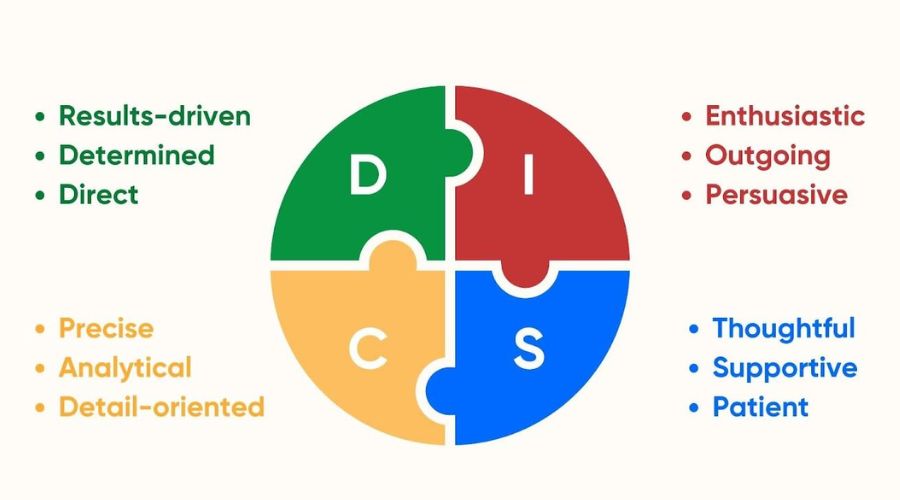
Understanding the differences between the DISC test and the MBTI test is essential for choosing the right tool for your personal growth or workplace development. While MBTI focuses on personality preferences, DISC measures observable behavior, making it easier to apply in real-world communication and teamwork.
Take our free DISC personality test to see your unique DISC profile in action and discover practical ways to improve collaboration, leadership, and performance!
Explore more on how to accurately interpret a DISC graph for insights!
16 Personalities Test
The 16 Personalities Test is a questionnaire designed to reveal how individuals absorb information, make decisions, and manage daily life.
Closely related to the Myers-Briggs Type Indicator (MBTI) developed from Carl Jung’s theories, it remains one of the most widely used workplace personality tools, with many major corporations relying on it. This behavioural assessment prompts participants to reflect on four core spectrums:
- Introversion (I) vs. Extroversion (E)
- Intuition (N) vs. Sensing (S)
- Feeling (F) vs. Thinking (T)
- Judging (J) vs. Perceiving (P)
Results are presented as a four-letter code (e.g., INFJ or ESTP), highlighting the most dominant traits. These insights can help employers craft tailored interview questions and understand how a person might contribute to team dynamics.
Big 5 (OCEAN) Test
Also known as the Five-Factor Model, the Big 5 Test evaluates personality through five dimensions:
- Openness
- Conscientiousness
- Extroversion
- Agreeableness
- Neuroticism
Each is measured on a scale. For instance, openness can range from highly imaginative to more practical and consistent. Participants rate statements about their behavior and personality from 1 (very inaccurate) to 5 (very accurate). Examples include “I feel little concern for others” or “I get stressed out easily.”
This test provides a deeper understanding of personality traits and how they may influence performance in specific roles.
Enneagram Test
The Enneagram categorizes personalities into nine interconnected types, each driven by a core motivation and underlying fear. Using a nine-point diagram, it highlights how people approach relationships, challenges, and decision-making.
Participants select between paired statements, for example:
- “Friendship over fairness” or “Fairness over friendship”
- “I rarely show affection” or “I am open in showing affection”
Results reveal strengths, growth areas, and how someone interacts with other personality types - valuable for leadership development and team building. Employers can use these results to anticipate collaboration styles and potential challenges in team settings.
Culture Add Test
The Culture Add Test focuses on how a candidate’s values and behaviors align with an organization’s core principles. Instead of looking for a “culture fit,” which can reinforce bias, this approach identifies how a person can enhance and diversify the workplace.
Both the company and the candidate complete surveys rating the importance of various values and traits—such as equality, independence, diligence, or empathy.
Results show whether the candidate’s mindset and working style will likely help them thrive in the role. Employers use it to evaluate collaboration style, openness to feedback, and adaptability, helping ensure hires will thrive while contributing to long-term cultural growth.
Ways to Apply Behavioural Assessments
What is behavioural assessment and how can it be applied effectively? These tools can be integrated across different stages of the employee journey, from hiring to professional development.
When used strategically, they deliver actionable insights that help organizations make accurate, objective, and culture-aligned decisions.
1. For Hiring
Organizations often integrate behavioral assessments into their hiring process to gain deeper insights into applicants beyond their resumes. These tools measure behavioral tendencies, communication style, and workplace attitude, helping recruiters spot candidates who fit the company culture.
In many cases, what is a behavioral assessment for employment refers to using these evaluations during pre-screening or shortly before interviews. This approach enables hiring teams to compare shortlisted candidates more effectively, ensuring objective data-backed decisions.
By combining behavioral results with skill-based evaluations, employers can identify the right talent with greater confidence, making the process more accurate than relying solely on resumes.
At the same time, when candidates see that the assessments are fair, transparent, and relevant to the role, it creates a positive impression of the company—helping to enhance the employer brand and support future hiring efforts.
2. For Learning and Development
In employee growth programs, behavioral evaluations are valuable for pinpointing strengths and areas for improvement. They reveal how individuals approach work, interact with colleagues, and adapt to challenges, offering managers a clear basis for tailored development plans.
Understanding these patterns allows leaders to create targeted training that fosters skill enhancement and personal growth. For example, identifying high initiative but low patience can guide leadership coaching that improves team dynamics.

3. For Enhancing Team Communication and Collaboration
Behavioral assessments can help improve communication and collaboration within teams by identifying individual strengths, work styles, and potential areas of conflict. When team members understand each other’s behavioral tendencies, they can adjust their communication approach, build stronger relationships, and work together more effectively toward shared goals.
Conclusion
Understanding what is behavioural assessment is more than just knowing the definition—it’s about seeing how insights into behaviour can shape smarter hiring, better team dynamics, and personal development. By exploring the traits, measurement methods, and goals behind these assessments, you gain tools to make informed decisions in the workplace.
Whether you’re an employer, HR professional, or individual looking to grow, leveraging behavioural assessments can provide clarity, improve outcomes, and unlock potential you might have overlooked.
FAQs
1. How long does a behavioural assessment take?
The length of a behavioural assessment depends on its format and purpose. Short, online assessments may take as little as 10–20 minutes, while more comprehensive evaluations - especially those involving multiple tasks or interviews—can last an hour or more.
In the context of what behavioural assessment is, the time investment ensures enough data is collected to accurately capture relevant traits and behaviours. Employers typically balance thoroughness with efficiency, aiming to complete the process quickly without compromising on the quality or reliability of the results.
2. Are behavioural assessments accurate?
Behavioural assessments are generally accurate when scientifically validated and applied correctly. They measure consistent traits and patterns, offering insights into how a person is likely to act in certain situations. However, understanding what is behavioural assessment means acknowledging that no tool is 100% predictive.
Factors like participant honesty and assessment relevance affect accuracy. To improve reliability, these tools are best used alongside interviews, skills tests, and reference checks rather than as a standalone method.
3. Can they be used alone to make hiring decisions?
While behavioural assessments offer valuable insights, they shouldn’t be the only basis for hiring. Knowing that behavioural assessment helps clarify that it evaluates traits and tendencies, not technical skills or past achievements. Relying solely on them may overlook critical qualifications.
For best results, employers combine these assessments with interviews, work samples, and reference checks. This blended approach ensures candidates are evaluated for both behavioural fit and their ability to meet the role’s practical requirements.
4. How should results from a behavioural assessment be interpreted?
Interpreting results involves analysing patterns, scores, or behavioural ratings against benchmarks or job requirements. Knowing what is behavioural assessment means understanding that interpretation should consider context, role expectations, and other performance indicators.
Scores should not be viewed in isolation; instead, they should be combined with interviews and references for a balanced perspective. Proper interpretation can reveal whether a candidate’s natural tendencies match the demands of the role, helping employers make confident and well-informed decisions.


Don't Let Your Potential Stay Hidden!
Take the DISC test today and discover your unique 'YOU', with deep insights into your true personality and potential.
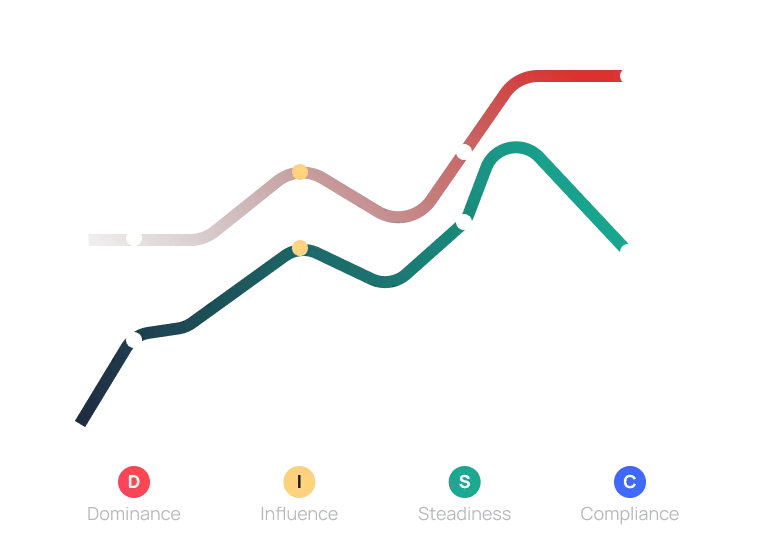
Represents your instinctive behaviors and desires.
Shows the behavioral tendencies you think you should exhibit in specific situations.
Related articles
You may also be interested in
 Self ExplorationNov 21, 2025
Self ExplorationNov 21, 2025What Does It Mean To Be Results-oriented? A Mindset For Lasting Success
Learn what does it mean to be results-oriented and how this mindset transforms goals into real outcomes. Boost focus, accountability, and lasting success.
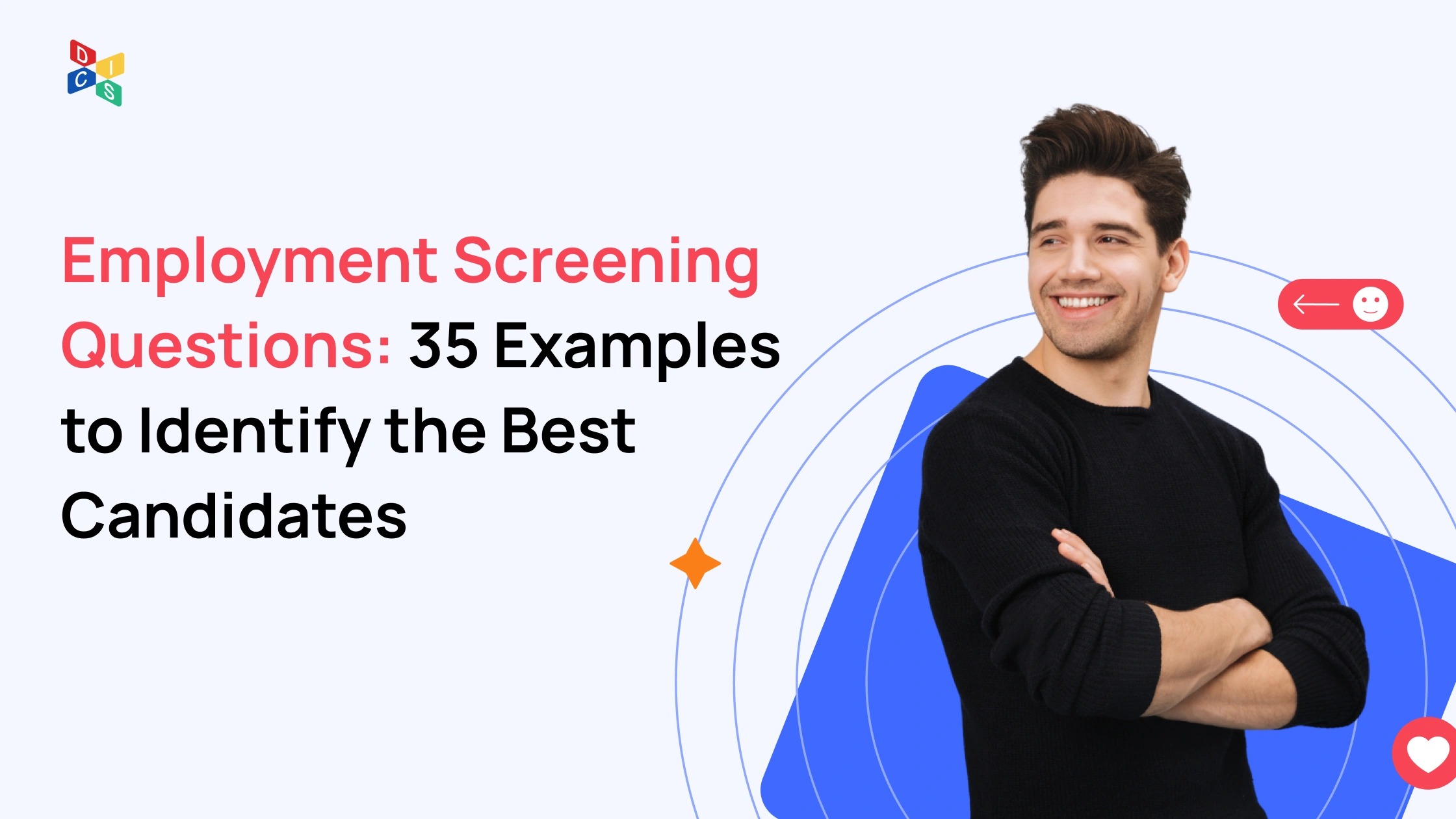 Self ExplorationOct 30, 2025
Self ExplorationOct 30, 2025Employment Screening Questions: 35 Examples to Identify the Best Candidates
Discover 35 powerful employment screening questions to assess skills, motivation, and cultural fit - plus expert tips for effective candidate selection.
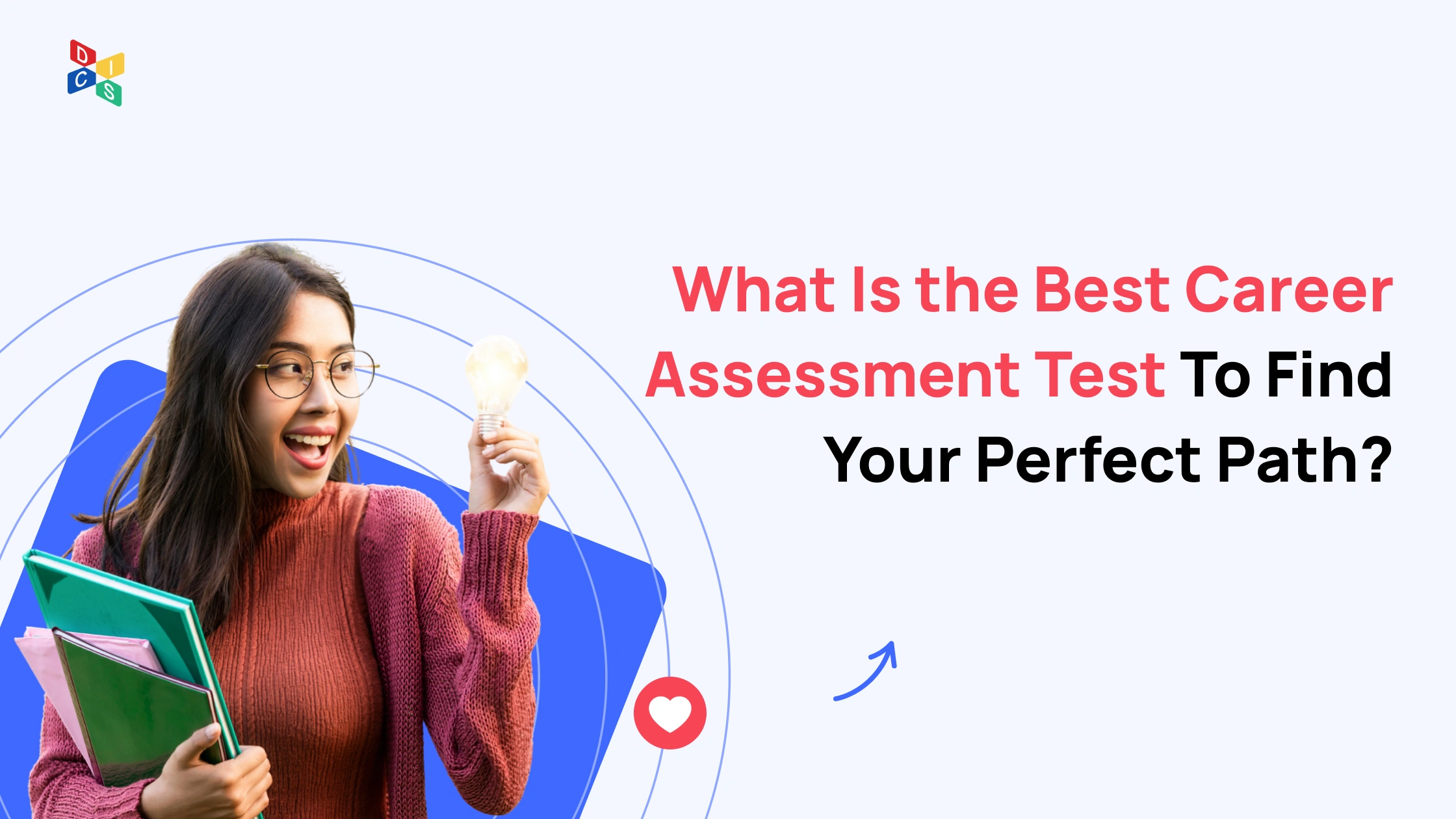 Self ExplorationOct 30, 2025
Self ExplorationOct 30, 2025What Is the Best Career Assessment Test To Find Your Perfect Path?
Wondering what is the best career assessment test? Explore proven tools that reveal your strengths, match your personality with a truly fulfilling career path.
